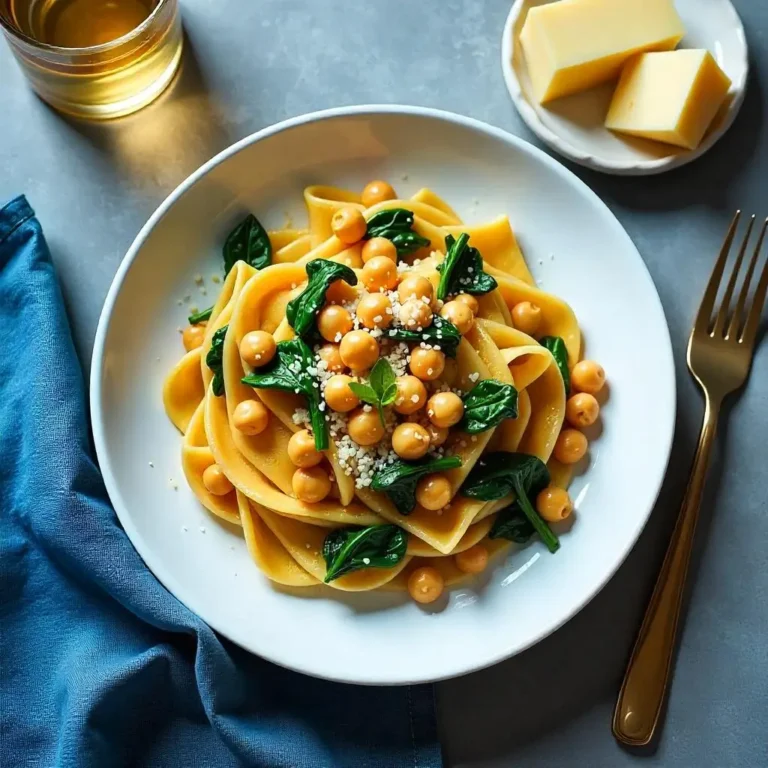When it comes to discovering the perfect balance between simplicity and flavor, this chickpea pasta recipe absolutely delivers on all fronts. Furthermore, there’s something truly magical about transforming just five humble ingredients into a restaurant-quality meal that satisfies both your taste buds and nutritional needs. Additionally, this traditional Italian dish, lovingly known as “Pasta e Ceci” or “pasta and chickpeas,” represents the very essence of Italian home cooking at its finest.
Moreover, I’m thrilled to share this authentic recipe in collaboration with Roberto, a passionate Italian cook who taught me the time-honored techniques behind this beloved comfort food. Consequently, you’ll learn not just how to make this dish, but also the cultural significance and culinary wisdom that makes it so special.
Not only does this chickpea pasta recipe come together in under 30 minutes, but it also provides an exceptional source of plant-based protein and fiber. Therefore, whether you’re seeking a quick weeknight dinner solution or planning to impress guests with minimal effort, this pasta e ceci will quickly become your most treasured recipe.
Table of content
- Why This Specific Chickpea Pasta Recipe is Special
- Key Ingredients and Substitution Notes for This Chickpea Pasta Recipe
- Step-by-Step Instructions for Making This Chickpea Pasta Recipe
- Professional Tips for Perfect Chickpea Pasta
- Storage and Meal Prep Guidelines
- Creative Variations of This Chickpea Pasta Recipe
- What is Pasta e Ceci?
- Serving Suggestions for Chickpea Pasta
- Frequently Asked Questions About Pasta e Ceci
- Nutrition Information
- Other recipe
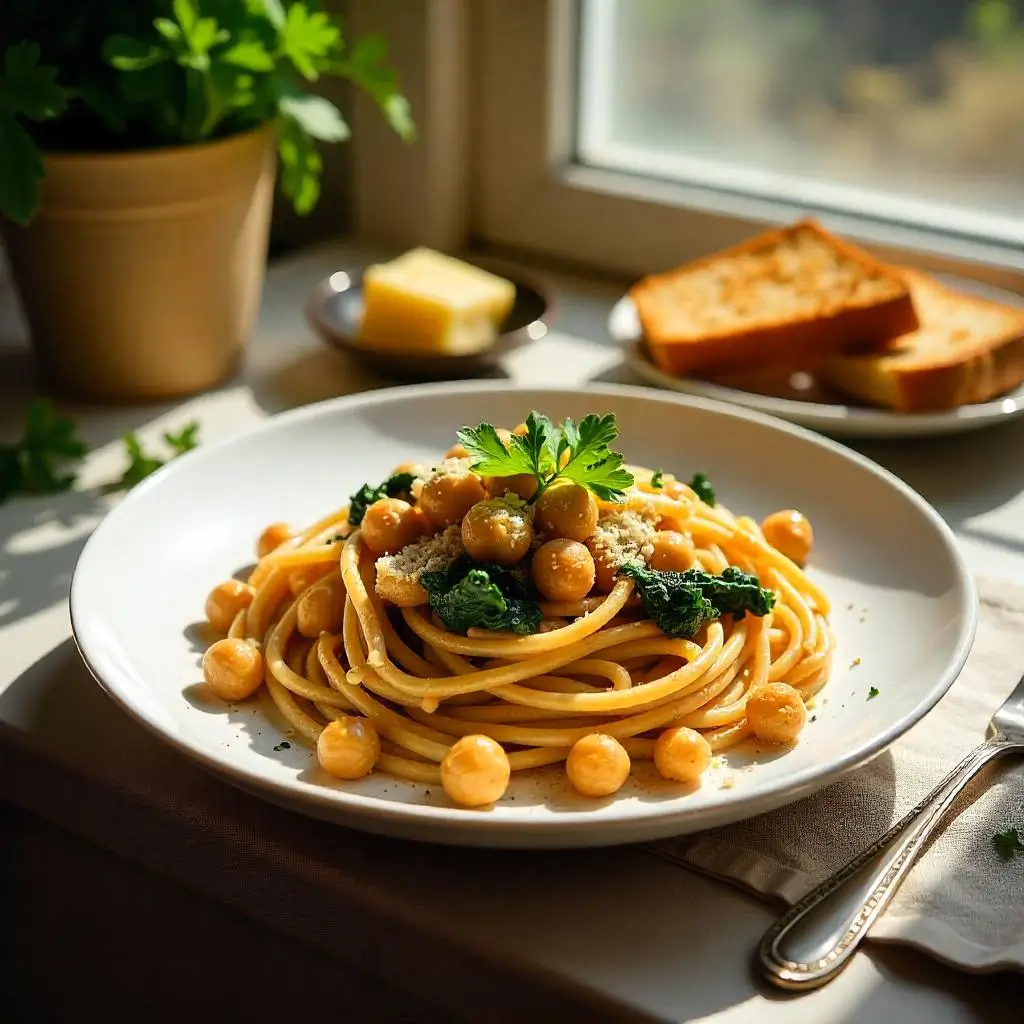
Why This Specific Chickpea Pasta Recipe is Special
First and foremost, this version seamlessly integrates into your regular meal rotation without requiring specialized shopping trips or exotic ingredients. Additionally, it provides an excellent opportunity to incorporate more plant-based proteins and fiber into your family’s diet naturally and deliciously.
Moreover, the preparation process is straightforward enough that even novice cooks can achieve restaurant-quality results. Consequently, this makes it an ideal recipe for busy parents, college students, or anyone looking to expand their cooking repertoire without intimidation.
Most importantly, this chickpea pasta recipe creates an incredibly creamy chickpea pasta sauce without using any dairy products. Instead, the magic happens through a simple emulsion technique that combines blended chickpeas, olive oil, and starchy pasta water. As a result, you achieve that luxurious, velvety texture that makes this dish the ultimate comfort food.
Furthermore, the natural creaminess that develops from this technique rivals any traditional cream-based sauce, yet it’s completely plant-based and naturally gluten-free friendly. Therefore, it accommodates various dietary preferences while delivering maximum flavor satisfaction.
Key Ingredients and Substitution Notes for This Chickpea Pasta Recipe
Understanding each ingredient’s role will help you achieve the best possible results with this chickpea pasta recipe. Moreover, knowing your substitution options ensures you can adapt the recipe to your preferences and dietary needs.
Pasta: Firstly, you can choose either long pasta shapes like spaghetti or linguine, or short varieties such as ditalini or small shells for this chickpea pasta. Additionally, gluten-free pasta works wonderfully in this recipe, making it accessible for those with gluten sensitivities. However, be sure to reserve extra pasta water when using gluten-free varieties, as they sometimes require additional starch for optimal sauce consistency.
Chickpeas (Ceci): Undoubtedly, chickpeas serve as the star ingredient in both the pasta e ceci dish and the creamy chickpea pasta sauce. Furthermore, you can absolutely use canned chickpeas for convenience, though cooking dried chickpeas from scratch will provide even richer flavor. Nevertheless, if using canned chickpeas, be sure to rinse them thoroughly and reserve some of the liquid for blending purposes.
Extra Virgin Olive Oil: This ingredient plays a crucial role in creating the silky texture of your chickpea pasta sauce through the emulsion process. However, if you prefer an oil-free version, you can substitute with additional pasta water or a small amount of tahini for richness.
Garlic (Aglio): Fresh garlic provides the aromatic foundation that elevates this simple dish. Alternatively, you can use garlic powder if fresh isn’t available, though the flavor won’t be quite as vibrant.
Salt (Sale): Properly salting your pasta water is essential for well-seasoned pasta and optimal flavor development throughout the dish. Therefore, don’t skip this crucial step, as it makes a significant difference in the final result.
Step-by-Step Instructions for Making This Chickpea Pasta Recipe
Step 1: Begin by bringing a large pot of generously salted water to a rolling boil. Meanwhile, heat extra virgin olive oil in a large skillet over medium heat.
Step 2: Next, add minced garlic to the heated oil and sauté until fragrant, approximately 30 seconds. Subsequently, add the chickpeas to the skillet and cook for 2-3 minutes, allowing them to warm through completely.
Step 3: Then, remove about two-thirds of the chickpeas from the skillet and transfer them to a blender or food processor. Additionally, add a splash of pasta water and a drizzle of olive oil to the blender.
Step 4: Blend the chickpea mixture until completely smooth and creamy. Consequently, this will form the base of your luxurious chickpea pasta sauce.
Step 5: Meanwhile, cook your pasta according to package directions until al dente. However, reserve at least one cup of starchy pasta water before draining.
Step 6: Return the blended chickpea mixture to the skillet with the remaining whole chickpeas. Subsequently, add the cooked pasta directly to the skillet along with a generous splash of pasta water.
Step 7: Finally, toss everything together vigorously, adding more pasta water as needed to create a creamy, cohesive sauce that coats each strand of pasta beautifully. The emulsion technique is key here for achieving that perfect consistency.
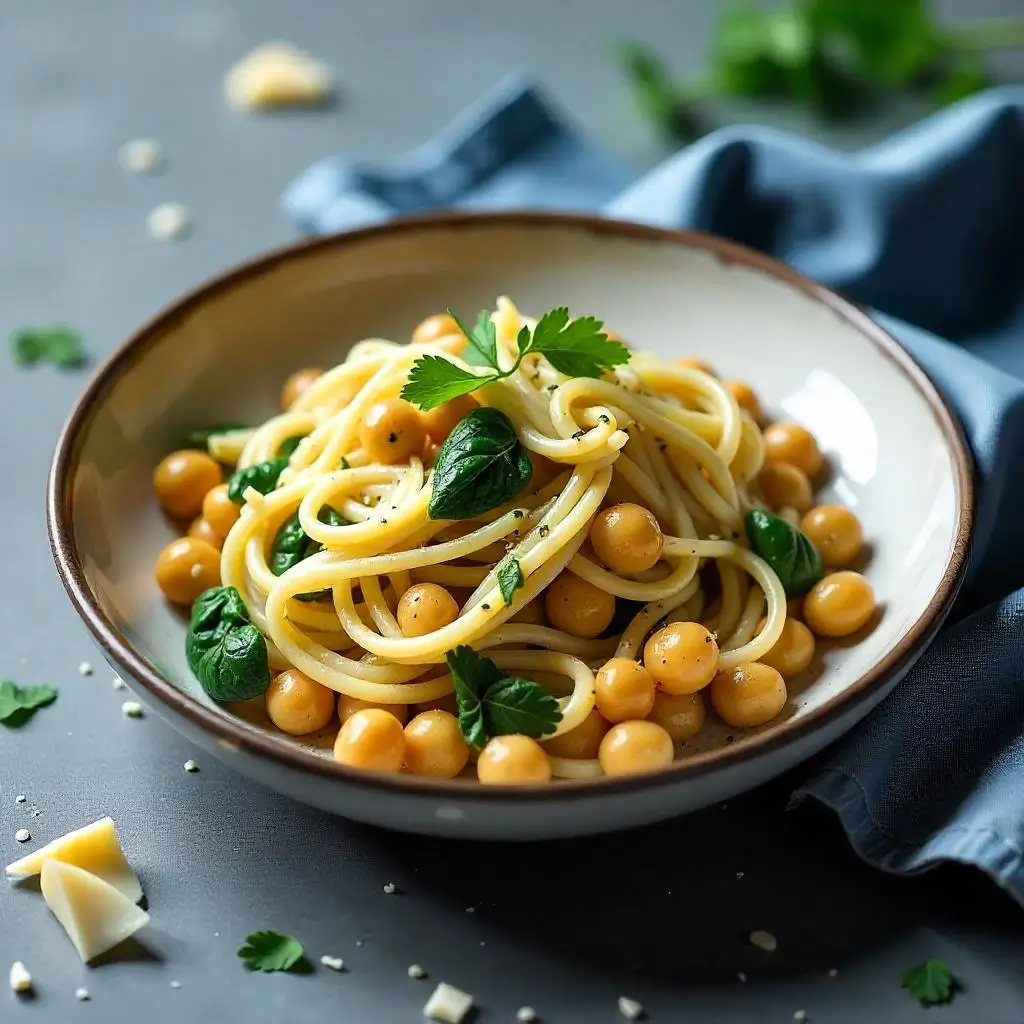
Professional Tips for Perfect Chickpea Pasta
Creating exceptional pasta e ceci requires more than just following the recipe—it’s about understanding the subtle techniques that elevate this dish from good to extraordinary. First and foremost, always reserve extra pasta water before draining, as this starchy liquid serves as the key to achieving that perfectly creamy consistency. Additionally, the temperature of your pasta water when combining with the chickpea mixture makes a significant difference in creating the ideal emulsion.
Furthermore, when blending your chickpeas, start with less liquid and gradually add more until you reach the desired consistency. This approach prevents the mixture from becoming too thin, which can be difficult to correct later. Moreover, don’t rush the emulsion process—vigorous stirring and patience are essential for developing that luxurious, restaurant-quality texture.
Another crucial tip involves timing your garlic cooking carefully. Since garlic can burn quickly and turn bitter, keep the heat at medium and watch it closely. Consequently, you’ll achieve that perfect aromatic foundation without any harsh flavors. Additionally, taste and adjust seasoning throughout the cooking process, as proper seasoning builds layers of flavor rather than just adding salt at the end.
Storage and Meal Prep Guidelines
Proper storage techniques ensure your pasta e ceci maintains its quality and flavor for future meals. Initially, allow the dish to cool completely before transferring to airtight containers. Subsequently, refrigerated pasta e ceci stays fresh for up to four days, making it excellent for meal prep purposes.
However, it’s important to note that the sauce may thicken considerably upon cooling. Therefore, when reheating, add a splash of water, broth, or pasta cooking liquid to restore the original creamy consistency. Additionally, gentle reheating over medium-low heat prevents the sauce from breaking or becoming grainy.
For freezing purposes, this chickpea pasta recipe freezes reasonably well for up to three months. Nevertheless, the texture may change slightly upon thawing, so consider freezing the chickpea mixture separately from the pasta for optimal results. Furthermore, portion individual servings before freezing to make weeknight reheating more convenient.
When meal prepping, consider preparing extra chickpea mixture and storing it separately. Consequently, you can quickly toss it with freshly cooked pasta throughout the week for consistently perfect texture and flavor.
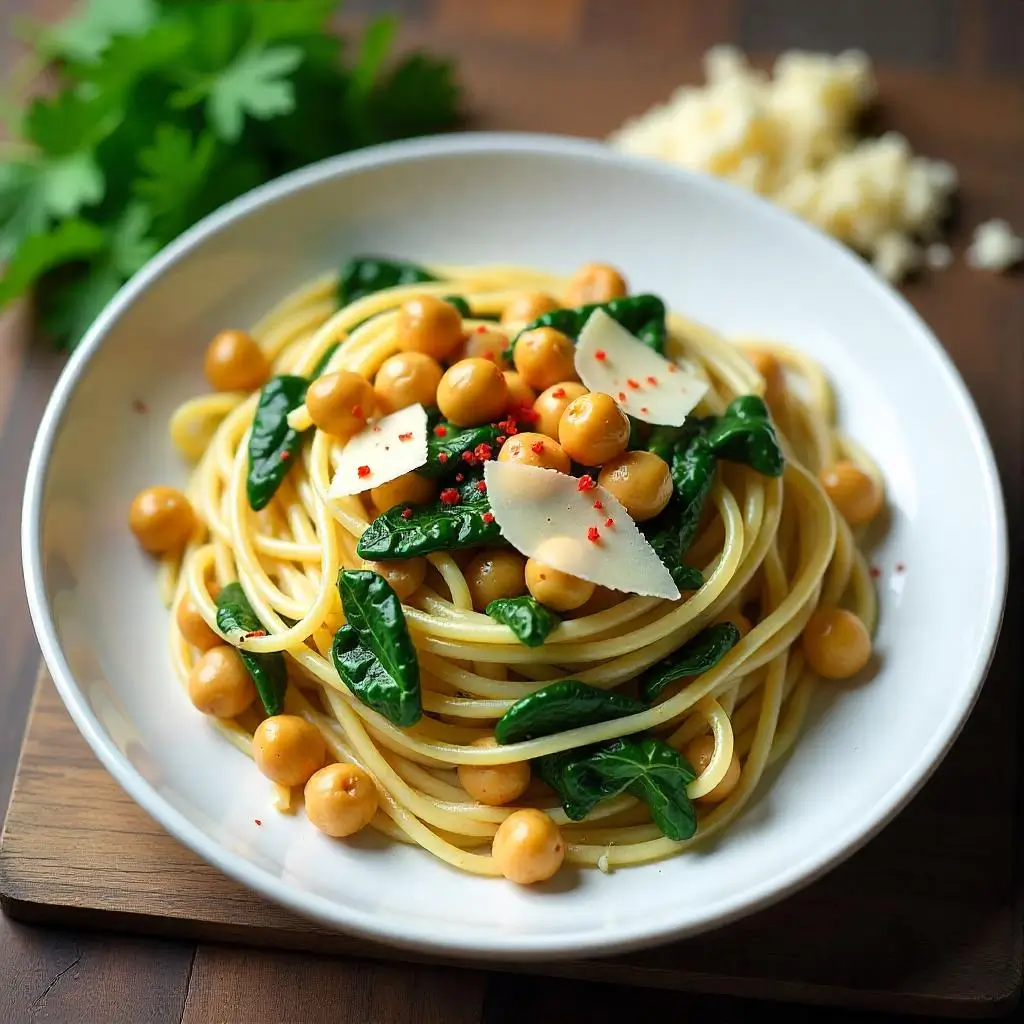
Creative Variations of This Chickpea Pasta Recipe
While Roberto’s five-ingredient version represents perfection in simplicity, there are numerous ways to customize this chickpea pasta recipe to suit different tastes and dietary preferences. For instance, Mediterranean enthusiasts can incorporate sun-dried tomatoes, olives, and fresh basil for a more complex flavor profile. Similarly, those who enjoy heat can add red pepper flakes or fresh chilies during the garlic sautéing stage.
Moreover, vegetable lovers can enhance the nutritional content by adding spinach, kale, or roasted vegetables during the final tossing stage. Additionally, for those seeking extra richness, a splash of white wine added after the garlic creates wonderful depth of flavor. Furthermore, herb enthusiasts can experiment with fresh rosemary, thyme, or oregano to create their signature variation.
Alternatively, protein additions work beautifully in this versatile dish. Consequently, you might consider adding cooked Italian sausage, pancetta, or grilled chicken for non-vegetarian versions. Meanwhile, vegan protein options like seasoned tofu or tempeh integrate seamlessly while maintaining the plant-based integrity of the original recipe.
What is Pasta e Ceci?
Essentially, “Pasta e Ceci” translates literally to “pasta and chickpeas” in Italian. However, this simple translation doesn’t capture the rich cultural heritage behind this beloved dish. In fact, Pasta e Ceci is a classic Italian recipe that originated in the southern and central regions of Italy, where resourceful home cooks created hearty, satisfying meals from humble ingredients.
Historically, this dish emerged from the tradition of “cucina povera,” which literally means “poor kitchen.” Consequently, Italian families developed this economical recipe as a way to stretch their ingredients while still creating something deeply nourishing and flavorful. Therefore, what started as a necessity has evolved into a cherished comfort food that appears on dinner tables across Italy and beyond.
Furthermore, the beauty of pasta e ceci lies in its simplicity. Rather than relying on expensive ingredients or complex techniques, this chickpea pasta recipe transforms basic pantry staples into something truly extraordinary. As a result, you’ll discover that sometimes the most humble ingredients create the most memorable meals.
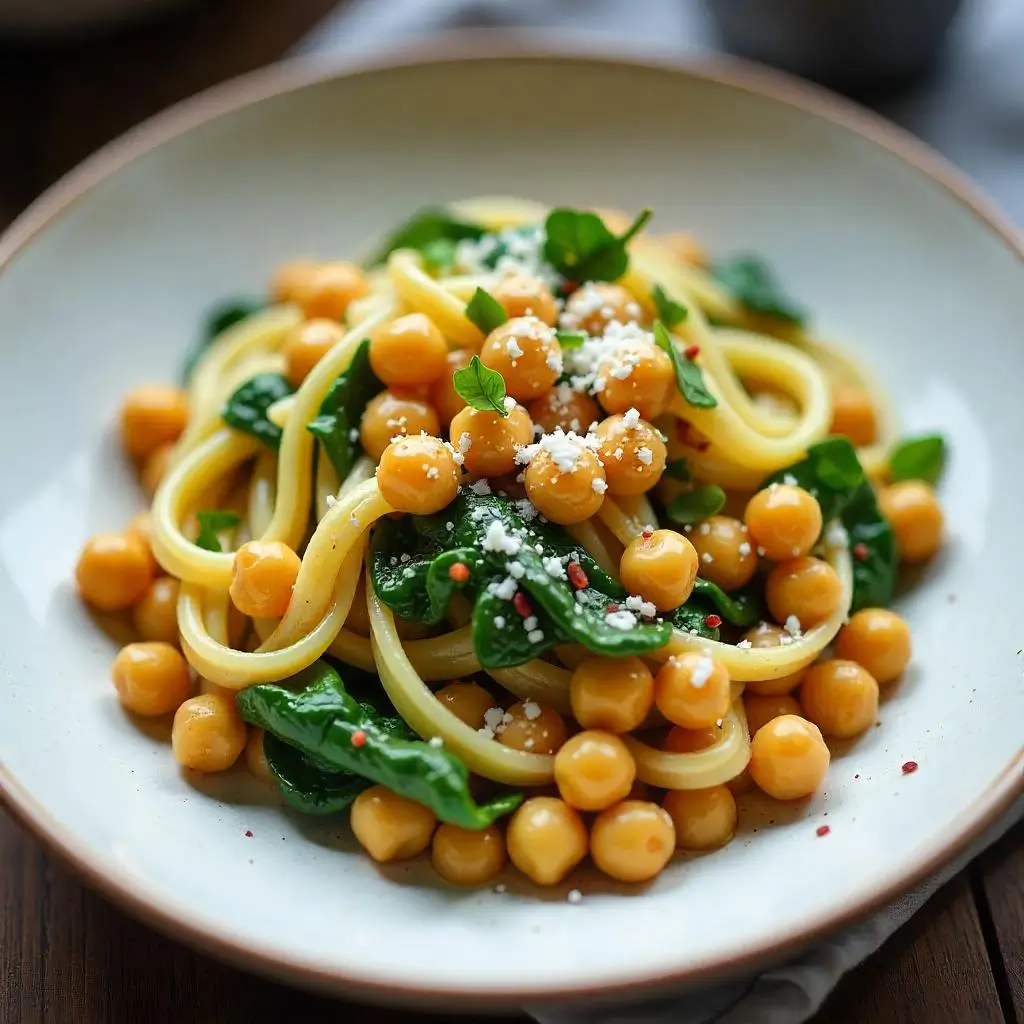
Serving Suggestions for Chickpea Pasta
To elevate your pasta e ceci even further, consider these delicious garnishing options. First, a drizzle of high-quality extra virgin olive oil adds luxurious richness. Additionally, freshly cracked black pepper provides a pleasant spicy contrast to the creamy base.
Furthermore, grated Parmesan cheese makes an excellent topping for non-vegan versions, while nutritional yeast offers a similar umami boost for plant-based preferences. Moreover, fresh herbs like parsley, basil, or oregano contribute bright, fresh notes that complement the earthy chickpeas perfectly.
Frequently Asked Questions About Pasta e Ceci
What exactly is pasta e ceci? Essentially, pasta e ceci is a traditional Italian dish combining pasta with chickpeas in a creamy, comforting sauce. The chickpea pasta sauce develops naturally through blending some of the chickpeas with olive oil and pasta water, creating incredible richness without dairy.
Is pasta e ceci vegan? Yes, this chickpea pasta recipe is completely vegan-friendly. Furthermore, it provides substantial plant-based protein and fiber, making it both nutritious and satisfying for vegan diets.
Can you make pasta e ceci gluten-free? Absolutely! Simply substitute your regular pasta with your favorite gluten-free variety. However, you may need to adjust the pasta water quantity slightly, as gluten-free pasta sometimes behaves differently during cooking.
Can I use canned chickpeas for pasta e ceci? Definitely! Canned chickpeas work perfectly well in this recipe. Nevertheless, be sure to rinse them thoroughly and consider using some of the canning liquid in your blending process for added flavor depth.
Nutrition Information
Understanding the nutritional profile of this chickpea pasta recipe helps you appreciate why it’s such a powerhouse meal. Furthermore, each serving delivers an impressive balance of macronutrients that supports both energy and satiety throughout your day. Additionally, the combination of pasta and chickpeas creates a complete protein profile, making this dish particularly valuable for vegetarian and vegan diets.
Per Serving (Serves 4):
- Calories: 485
- Protein: 18g
- Carbohydrates: 72g
- Dietary Fiber: 12g
- Total Fat: 15g
- Saturated Fat: 2g
- Sodium: 320mg (varies with salt added)
- Iron: 4.2mg (23% DV)
- Folate: 165mcg (41% DV)
- Magnesium: 78mg (19% DV)
Other recipe
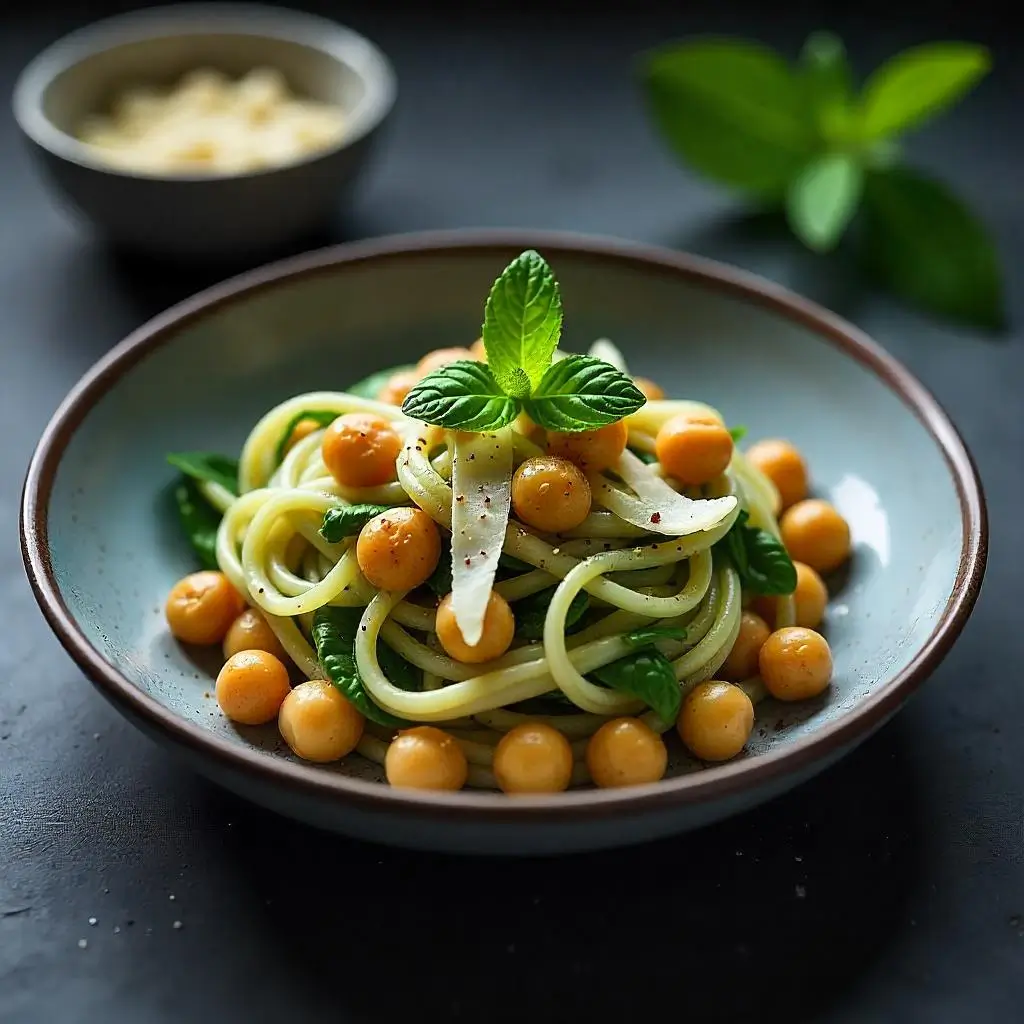
Ultimately, this 5-ingredient chickpea pasta recipe represents everything beautiful about Italian cooking—simplicity, quality ingredients, and techniques passed down through generations. Moreover, Roberto’s authentic approach demonstrates that extraordinary meals don’t require complicated processes or expensive ingredients. Instead, they require understanding, patience, and respect for each component.
Furthermore, beyond its incredible taste, this pasta e ceci offers remarkable nutritional benefits while accommodating various dietary preferences. Whether you’re cooking for vegans, gluten-free diets, or simply seeking more plant-based protein, this versatile recipe delivers on all fronts. Additionally, its quick preparation time and pantry-friendly ingredients make it an invaluable addition to any cook’s repertoire.
Most importantly, this chickpea pasta recipe creates opportunities for meaningful connections around the dinner table. Consequently, as you share this comforting dish with family and friends, you’re participating in a culinary tradition that spans generations and celebrates the power of simple, honest cooking.
Therefore, I encourage you to make this recipe your own, experiment with the suggested variations, and most of all, enjoy the process of creating something truly special from just five simple ingredients. After all, the best recipes are those that bring joy both in the making and the sharing.
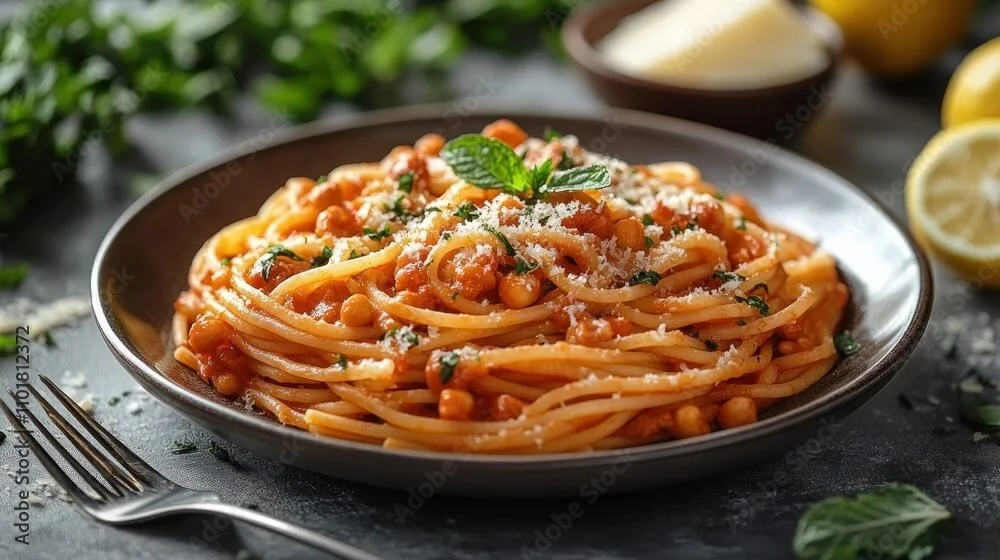
“How to Make Chickpea Pasta: A Simple and Nutritious Recipe”
Description
“Learn how to make chickpea pasta from scratch with this easy, nutritious recipe. A healthy, gluten-free alternative perfect for any meal!”
Ingredients
Instructions
- Cook pasta in salted water until al dente, reserving pasta water
- Sauté garlic in olive oil, add chickpeas
- Blend 2/3 of chickpeas with pasta water and oil until smooth
- Combine pasta, whole chickpeas, and blended mixture
- Toss with pasta water until creamy
- Season and serve immediately
Notes
- This blog post provides a step-by-step guide to making homemade chickpea pasta using simple ingredients. It highlights the health benefits of chickpeas, such as being high in protein and fiber, and offers tips for making the pasta gluten-free. The recipe is ideal for those following plant-based, gluten-free, or high-protein diets.

